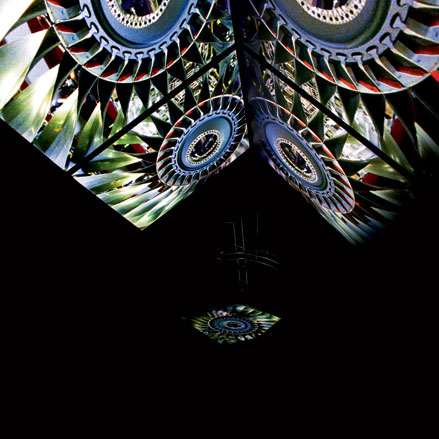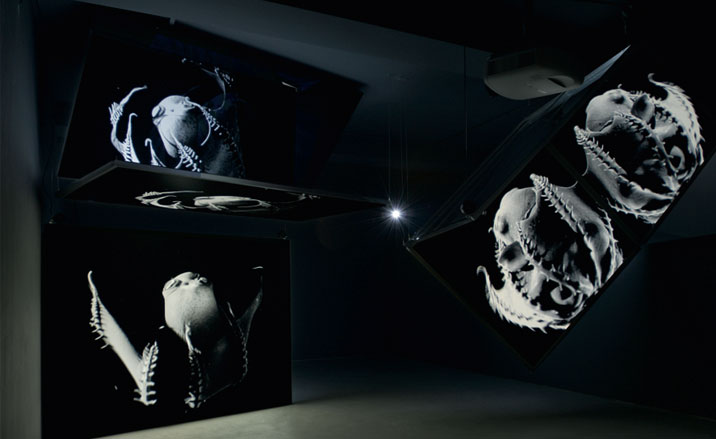In the Spirit of Diaghilev

“Surprise Me” - Diaghilev's notorious challenge to Jean Cocteau was also the catchphrase for his company, Les Ballets Russes. Diaghilev’s mission was to transform ballet into the most chic, experimental art form of its time – and for Les Ballets Russes' centenary, it has commissioned four new danceworks from four eminent choreographers in the same theme: “In the Spirit of Diaghilev”.
We were indeed surprised. Some people, in fact, were so surprised by the last performance that they walked out in disgust – a reaction that was in itself suprising, being something you don’t often encounter at the ballet. But with graphic sex, bad language, set designs by Jane and Louise Wilson, scores by Nitin Sawhney, and costumes by Hussein Chalayan, this was no ordinary ballet.
The four choreographers - Sidi Larbi Cherkaoui, Javier De Frutos, Russell Maliphant and Wayne McGregor each working with all or part of their own company, also enlisted a host of world class designers, composers and artists from beyond the realms of dance to bring their performances to life.
The performance opened with McGregor's Dyad 1909, which takes inspiration from Shackleton's expedition to the South Pole in the year of the Ballets Russes' launch. The sets by the Wilson sisters include projected images of machinery and iceflows and are utterly mesmerizing and accompanied by music by Olafur Arnalds.
Maliphant's AfterLight, up next, was in stark contrast and utterly mesmerizing. Inspired by Nijinsky, the dancer Daniel Proietto spun like a moth under Michael Hull's hypnotic lighting – the only intervention on an otherwise bare stage.
Faun, a fairytale duet performed in an enchanted wood was Sidi Larbi Cherkaoui's contribution, and a reinvention of the 1911 Nijinsky ballet. Hussein Chalayan’s sculptural biomorphic costumes, and Nitin Swarney’s sountrack were highlights in an ethereal world, and brought home the spirit of collaboration of which Diaghilev was so pioneering.
The last instalment, In Eternal Damnation to Sancho and Sanchez, by Javier de Frutos, was the show stopper, which – with its sensationalist salaciousness - hogged most media coverage, sadly somewhat eclipsing the inspirational beauty of the other three performances.
Receive our daily digest of inspiration, escapism and design stories from around the world direct to your inbox.
Paying tribute to Cocteau, the ballet was cast with an orgy of pregnant nuns and lusty priests and set amongst graphic pink frescoes. It set out to be offensive but the wit in the references meant he just about got away with it.
Surprisingly, it was the less in-your-face dances which created the most lasting impression, ultimately. All in all, a thrilling tribute.

Wayne McGregor’s Dyad 1909. The sets by the Wilson sisters include projected images of machinery and iceflows

Wayne McGregor’s Dyad 1909. The choreography was accompanied by music by Olafur Arnalds

Wayne McGregor’s Dyad 1909

Wayne McGregor’s Dyad 1909
-
 The new Tudor Ranger watches master perfectly executed simplicity
The new Tudor Ranger watches master perfectly executed simplicityThe Tudor Ranger watches look back to the 1960s for a clean and legible design
-
 This late-night hangout brings back 1970s glam to LA’s Sunset Boulevard
This late-night hangout brings back 1970s glam to LA’s Sunset BoulevardGalerie On Sunset is primed for strong drinks, shared plates, live music, and long nights
-
 How Memphis developed from an informal gathering of restless creatives into one of design's most influential movements
How Memphis developed from an informal gathering of restless creatives into one of design's most influential movementsEverything you want to know about Memphis Design, from its history to its leading figures to the pieces to know (and buy)